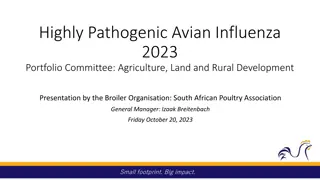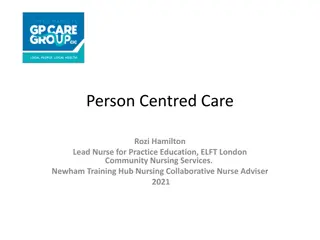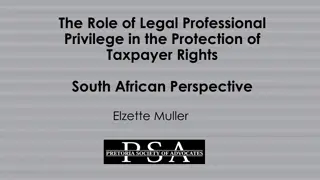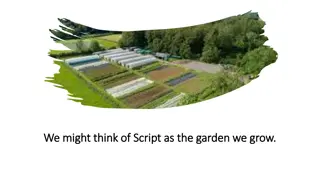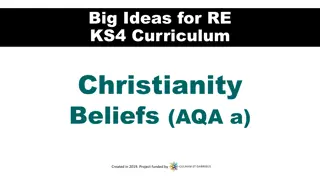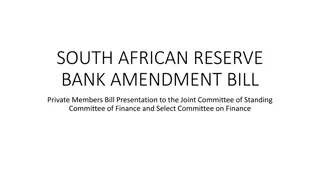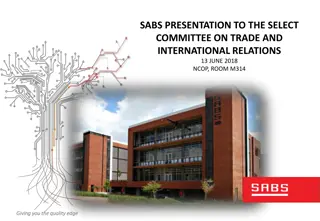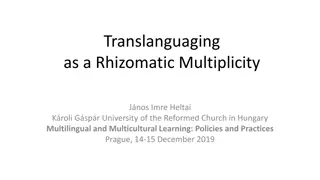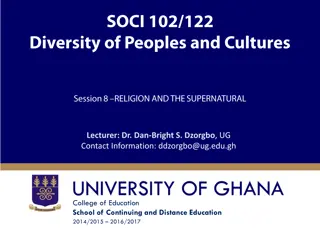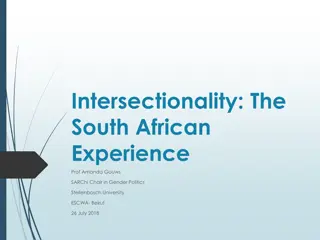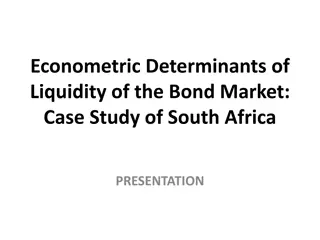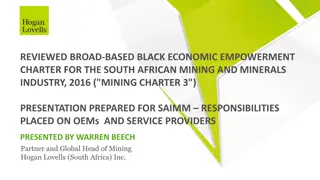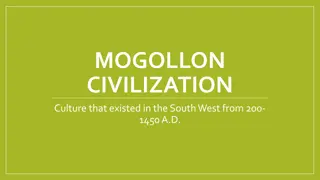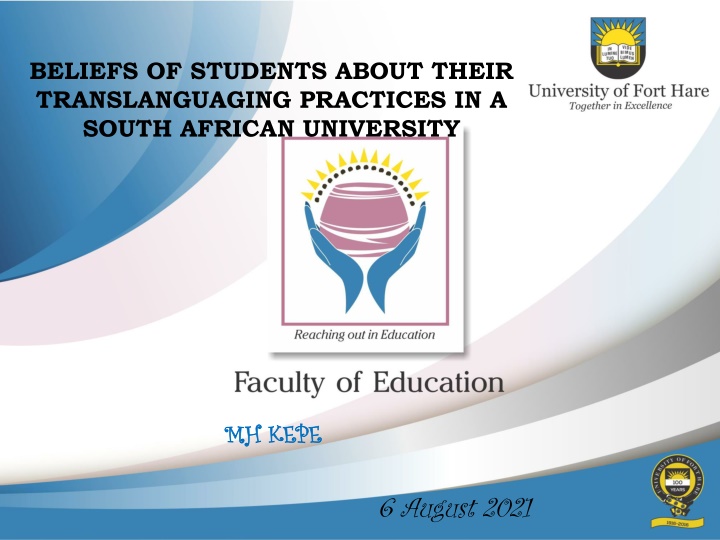
Students' Translanguaging Beliefs in a South African University
This study delves into the beliefs of students regarding their translanguaging practices in a South African university, aiming to bridge the gap in understanding their pre-writing practices. It explores the impact of translanguaging as a scaffolding theory and teaching method, utilizing a theoretical framework of translatability to situate the research. The study sheds light on students' struggles with conceptualization in English methodology classes and the implications on their academic performance.
Download Presentation

Please find below an Image/Link to download the presentation.
The content on the website is provided AS IS for your information and personal use only. It may not be sold, licensed, or shared on other websites without obtaining consent from the author. If you encounter any issues during the download, it is possible that the publisher has removed the file from their server.
You are allowed to download the files provided on this website for personal or commercial use, subject to the condition that they are used lawfully. All files are the property of their respective owners.
The content on the website is provided AS IS for your information and personal use only. It may not be sold, licensed, or shared on other websites without obtaining consent from the author.
E N D
Presentation Transcript
BELIEFS OF STUDENTS ABOUT THEIR TRANSLANGUAGING PRACTICES IN A SOUTH AFRICAN UNIVERSITY MH MH KEPE KEPE 6 August 2021
PRESENTATION OUTLINE PURPOSE RATIONAL FOR THE STUDY INTRODUCTION/BACKGROUND THEORETICAL FRAMEWORK LITERATURE REVIEW METHODOLOGY RESULTS RESULTS/ TRANSLANGUAGING PRACTICES CONCLUSION
PURPOSE The study sought to explore the students beliefs about their translanguaging practices in a South African university Several studies were conducted on translanguaging as a concept and its benefits to our language classroom practice. There appears to be a divergence concerning the beliefs of students about their translanguaging practices during pre-writing in this discipline. This study is an attempt to narrow that divergence. Addressing this would involve, amongst other things, depicting how translanguaging as a scaffolding theory and a teaching method was used by the study group aided by Gibbons scaffolding curriculum cycle (2002). The central question directed is: What are the students beliefs about their translanguaging practices in a South African university?
RATIONAL FOR THE STUDY The study emerged because many students in the English methodology class of which I am teaching appeared to struggle with conceptualising their courses and added information, impacting negatively on their duly performed (DP) as they score low marks.
BACKGROUND Congruent research affirms that students learning English as First Additional Language (EFAL) battle with conceptualisation and struggle to classify added information at universities in South Africa. This situation persists despite the country's official language policies, which require schools to choose a language or languages of learning and teaching. Conversely, most choose English or Afrikaans and not the African language as spoken in the area. African languages are then only taught as subjects and are rarely used as a medium of instruction. The Department of Education's Language in Education Policy since 1998 is underpinned by the principle of the right of children to be educated in their mother tongue whilst having access to a global language such as English.
THEORETICAL FRAMEWORK After perusing various case studies about translanguaging practices across South Africa and globally, I learnt that whilst no approach can be directly transferred from one local context to another, we can all establish something useful to learn from the various contexts. Nunn (2011) refers to this situation as translatability , contending that skills need reinforcement, reapplication, and reinvention within a framework that both requires and encourages their use. Having reviewed the literature on translanguaging practices in South African and international context, I am convinced that translatability is a relevant theoretical framework that can serve as a link in situating the research question for this study.
LITERATURE REVIEW Often in linguistically diverse settings, languages are kept separate in learning. Education stakeholders emphasize language purism and a strict separation of languages at school (Banda 2004). While such monolingual orientations have shaped language policies and practices in schools, multilingual realities in classrooms are frequently not recognized as pedagogic resources for harmoniously transitioning students from home languages and knowledge to school languages (Garc a, 2011). The term translanguaging was first used by Cen Williams, the Welsh term trawsieithu in 1994. Refer to a pedagogical practice where students in bilingual Welsh/English classrooms are asked to alternate languages for the purposes of receptive or productive use (Williams, 1994).
METHODOLOGY The design was a qualitative ethnographic case study, whilst the paradigm was interpretive. The setting was the UFH, Alice Campus, in the Eastern Cape, South Africa. The participants ranged in age from 18 to 35. I was a participant-observer, therefore, an insider, teaching them English Methodology and Philosophy of Education. I observed the participants translanguaging practices during our sessions from which I collected first-hand data (Adler & Adler, 1994). The research question directed, What are the beliefs of students about their translanguaging practices in a South African university?
METHODOLOGY The theme is divided into three: a) the beliefs of the study group about translanguaging, b) the translanguaging practices of the study group, and c) observation I interviewed the five members of the study group (students) about their beliefs on translanguaging as a theory and teaching method. They all consented to me using the interview data. There was no request for anonymity; instead, participants were keen to have their names and photographs included, if needed, in any report or conference report. I, therefore, provide the names of the study group (also year 4s student teachers), as follows: Portia Lerato Jafter, Mlahleki Vuyokazi, Sephoko Siviwe, Mhlekude Asiphe, and Xhotyeni Luyolo. Each member devises their own strength.
RESULTS THEME A: THE beliefs of the study group about translanguaging Excerpt 1 (Jafter) To be honest, when I first heard about translanguaging I was a bit sceptical. I won t lie and I just thought it was similar to code-switching and did not want to accept that it was different and so I questioned its relevance; however, when I started reading more about it and saw how it was used in the past by different researchers, I realised that this is something I used my entire life and it is a simple concept really and naturally occurring. As quite often, we use the existing language to decode and understand the new language, so, it is a teaching strategy that I would encourage my learners to use because it has worked for me even though I did not know what it was then; it can work for others too who wish to try it. The above observations signal the stereotypes about using the African languages as media of learning and teaching or as school subjects.
RESULTS Excerpt 3 (Sephoko) I never thought that languages can coexist in the classroom situation concerning having the liberty to express your views where English domination is controlled. I never knew that learners mother languages can be used in the group discussions, through exploratory talk in English Class. The only way I knew was that learners should be taught in English as prescribed by the CurriculumAssessment Policy Statements (CAPS). But after I heard about translanguaging, I began to understand that learners mother languages can be used through exploratory talk but presented in the target language (presentational talk). The South African LiEP Act, 1996 recognises that cultural diversity is a valuable national asset (Doe, 1997).
RESULTS Excerpt 2 (Mlahleki) When I first heard about translanguaging, I thought it was about code-switching, but as I learnt more about it, my attitude changed, resulting in a different perspective about it. Now, I understand that translanguaging is about using the mother language as a resource to learn a new language, English in my case. As a prospective teacher, I imagine a classroom situation where one s learners are allowed to engage in a classroom discourse not limited to English only but also using their mother languages to brainstorm through exploratory talk. However, the subject matter discussed whether in pair work or group should be presented in the target language [English]. Students smuggle their mother language during class discussions and this report should be observed as a way of recognising the learners L1s through translanguaging.
TRANSLANGUAGING PRACTICES THEME B: Translanguaging practices Working in groups of five, the participants had to plan a narrative genre using a story pyramid illustrated below(fig.1) in which the study group named the main character; next described the main character in two words, then in three words described the setting. They stopped at this point because the purpose was to author their stories [the fourth stage in the Gibbons cycle]. For this report, I focused on building knowledge of the text only. To do this, and as a way of building knowledge, I presented the participant with Roald Dahl s TheLandlady (1959/1991). In groups, they were instructed to read the story and respond to the questions, based on it. The limited space provided for this report prevents me from presenting or attaching the story. This activity was provided to the English methodology class; however, the focus was on the study group. I draw the focus of the reader to only one activity planned by the study group under the theme: students pre- writing. CAPS requires writing as a process, so the pre-writing process, represented by the pyramid below (fig. 1) is part of the writing process [a pre-writing/ brainstorming/ or planning activity building towards writing a full story/narrative.
TRANSLANGUAGING PRACTICES 6.1.2 Figure 1. Pyramid 1 (P1) Topic/title of the story Describe the main character in two words In three words describe the setting Note. As explained above, P1 (fig.1) represents the first stage where the participants had to collect and build knowledge around the provided topic. Next, in Pyramid 2 (P2) follows the study group s translanguaging through pre-writing in IsiXhosa, Sesotho and English.
TRANSLANGUAGING PRACTICES 6.1.2 Figure 2 Pyramid 2 (P2) Note: P2 (Fig. 2) above depicts meaning interchange of the topic/title written in isiXhosa, Sesotho, and English (translanguaging).
TRANSLANGUAGING PRACTICES 6.1.2 Figure 3. Pyramid 3 (P3) P3 (Fig. 3) above represents the name of the main character, constructed in English & Sesotho, and in isiXhosa (translanguaging).
TRANSLANGUAGING PRACTICES 6.1.2 Figure 4. Pyramid 4 (P4) Note. P4 (fig 4) above represents the description of the main character, constructed in English and Sesotho.
TRANSLANGUAGING PRACTICES 6.1.2 Figure 5 Pyramid 5 (P5) Note. P5 (fig.5) above represents the description of the main character, constructed in isiXhosa.
TRANSLANGUAGING PRACTICES 6.1.1 Figure 6. Pyramid 6 (P6). Note. P6 (Fig 6) depicts a setting description. Defining and describing characters or locations effectively and vividly are central features of narratives. Edgar and Padgett (1995) additionally concur that a narrative genre represents an ideal opportunity to teach grammar in context.
CONCLUSION This report should be observed as a way of recognising the learners L1s through translanguaging, as it illustrates that monolingual ideologies and practices are ineffective. They do not provide a positive school experience and pedagogy with cognitive support needed for multilingual children (Lee & Canagarajah, 2018). Taglialatela (2012) affirms that classroom language practices of multilingual learners should be characterised by a discursive practice of languaging . As in Garc a and Sylvan (2011), translanguaging is not simply copying information from one language to another. A case in point is that of Jafter. Jafter studied her primary school/elementary level and secondary school using English as L1. She only spoke the vernacular languages at home [Sesotho and isiXhosa]. She had to teach herself how to speak and write both in Sesotho and isiXhosa. She underscores her proficiency in English as having helped her to learn other languages. Her mother also played a vital role in understanding the difference amongst the languages [English, isiXhosa and Sesotho]. Her mother helped her distinguish concerning how various alphabets sound in each of those languages.
CONCLUSION To the above point, for example, Jafter notes that the C in isiXhosa does not sound the same in English. Whilst the Sesotho Language does not use the C , instead, it uses K with a different sound from C . Jafter states that even though her mother encouraged multilingualism, she advocated for better proficiency in English concerning speaking, reading, and writing above her aforementioned vernacular languages. Like Jafter Mlahleki notes that when she first heard about translanguaging, she thought it was about code-switching, but as shed learnt more about it, her attitude changed, resulting in a different perspective about it. Now, she understands that translanguaging is about using the mother language as a resource to learn a new or target language, English in her case. As a prospective teacher, she imagines a classroom situation where one s learners are allowed to engage in a classroom discourse not limited to English only but also using their mother languages as a repertoire to brainstorm through exploratory talk . She notes that however, the subject matter discussed whether in pair work or group should be presented in the target language [English]. This study demonstrates that to take a more complex account of language use and match multilingual spaces, classroom language practices of multilingual learners should be characterised by a discursive practice of languaging .
REFERENCES Adler, P.A., & Adler, P. (1994). Observational techniques. In N. K. Denzin & Y.S. Lincoln (Eds.), Handbook of qualitative research (pp. 377-392). Sage. Banda F 2004. A survey of literacy practices in black and coloured communities in South Africa: Towards a pedagogy of multiliteracies. In MJ Muthwii & AN Kioko (eds). New language bearings in Africa: A fresh quest. Clevedon, UK: Multilingual Matters. Barnes, D. R. (1992). From communication to curriculum (2nd ed.). Boynton/Cook. Dahl, R. (1991). Collected stories. Penguin Books. Department of Education. (1997). Language in education policy. Pretoria: Government Printers. https://www.education.gov.za/Portals/0/Documents/Policies/GET/LanguageEducationPolicy1997.pdf Department of Basic Education. (2011). Curriculum assessment policy statement (CAPS) for English first additional language, further education and training phase, Grades 10-12. English first additional language. https://www.education.gov.za/Curriculum/CurriculumAssessmentPolicyStatements(CAPS)/CAPSFET.aspx. Edgar, C., & Padgett, R. (1995). Introduction. In C. Edgar & R. Padgett (Eds), Old Faithful: 18 Writers present their favorite writing assignments. Teachers and Writers Collaborative. Garc a, O., & Sylvan, C. (2011). Pedagogies and practices in multilingual classrooms: Singularities in pluralities. The Modern Language Journal. 95. 385 400. 10.1111/j.1540-4781.2011.01208.x. Gibbons, P. (2002). Scaffolding language, scaffolding learning: Teaching second language learners in the mainstream classroom. Heinemann. Lee, E., & Canagarajah, S. (2018). The connection between transcultural dispositions and translingual practices in academic writing. Journal of Multicultural Discourses 14(1),14-28. http://doi.org/10.1080/17447143.2018.1501375 Nunn, R. (2011). Introduction. In R. Nunn & S. Sivasubramaniam (Eds., pp. 4 30). From defining EIL competence to designing EIL learning. Published by The Asian EFL Journal Press for the EIL. Journal. https://www.researchgate.net/publication/255988194_From_Defining_EIL_Competence_to_Designing_EIL_Learning Taglialatela, A. (2012). Exploiting sound and music for foreign/second language acquisition. Englishes, XV, 46. 125-140. https://www.researchgate.net/publication/269690930_Exploiting_Sound_and_Music_for_ForeignSecond_Language_Acquisition_Englishes_46_2012_125-140 Williams, C. (1994) Arfarniad o Ddulliau Dysgu ac Addysgu yng Nghyd-destun Addysg Uwchradd Ddwyieithog, [An evaluation of teaching and learning methods in the context of bilingual secondary education]. Unpublished Doctoral Thesis (University of Wales, Bangor).

